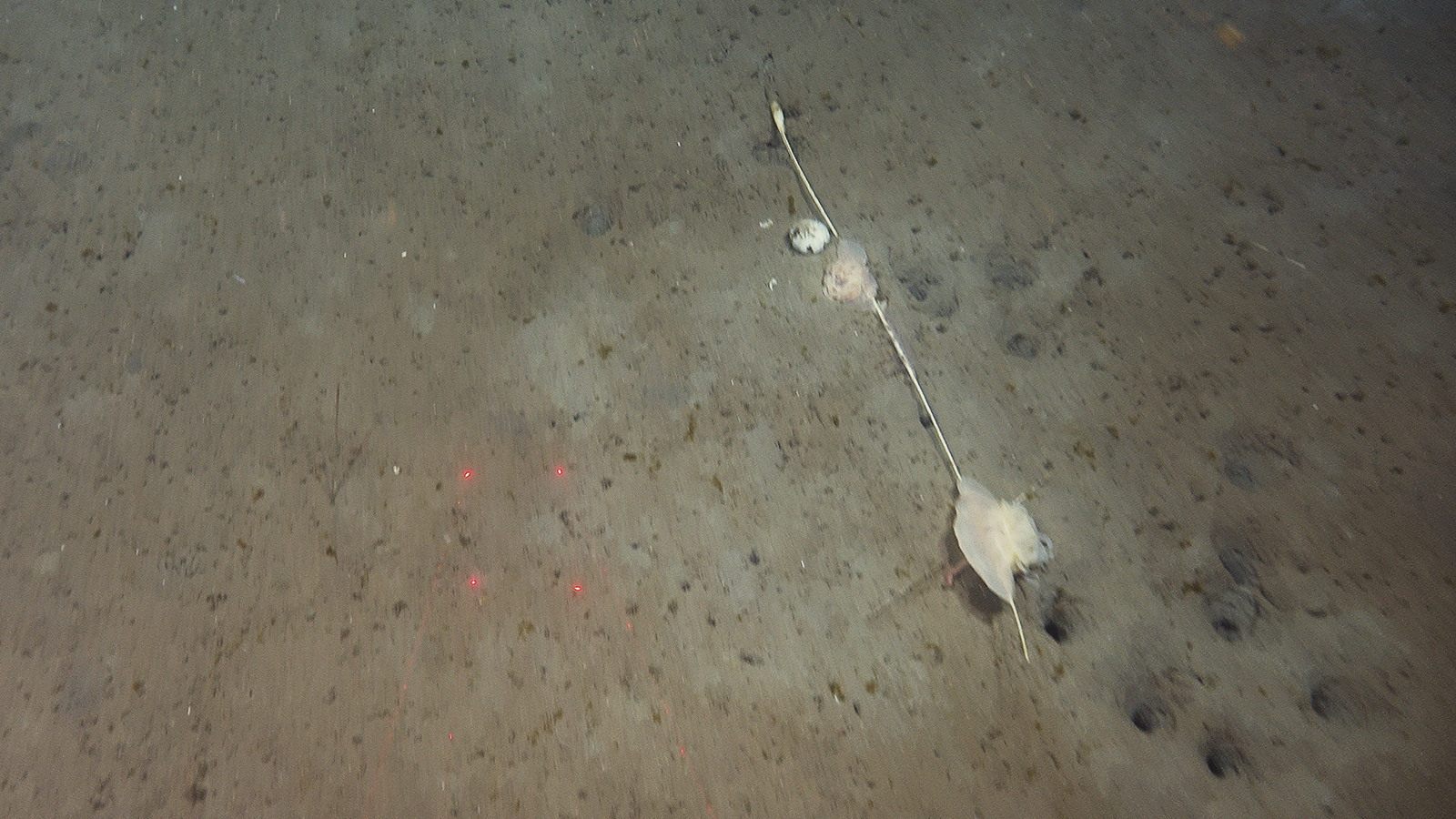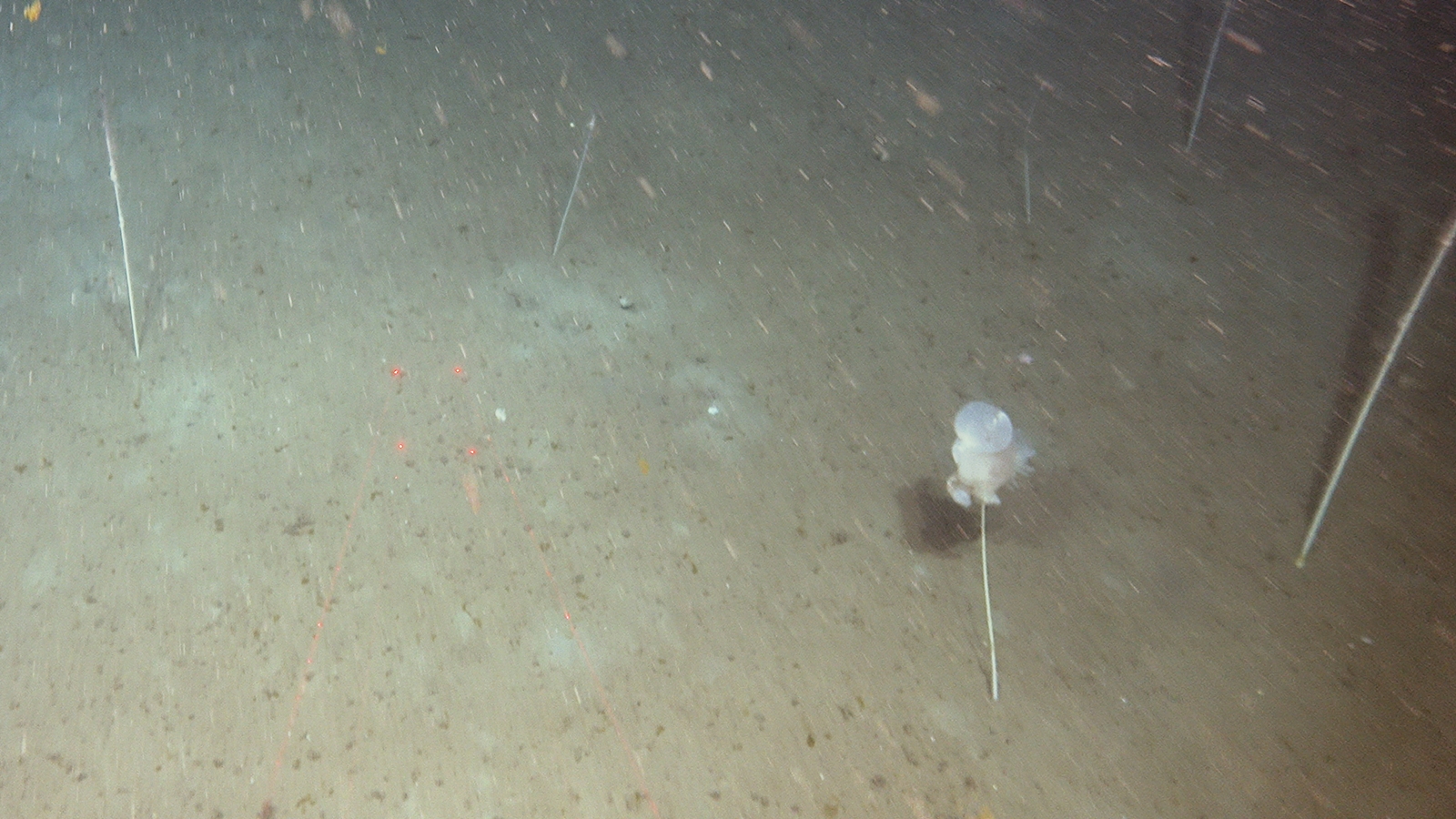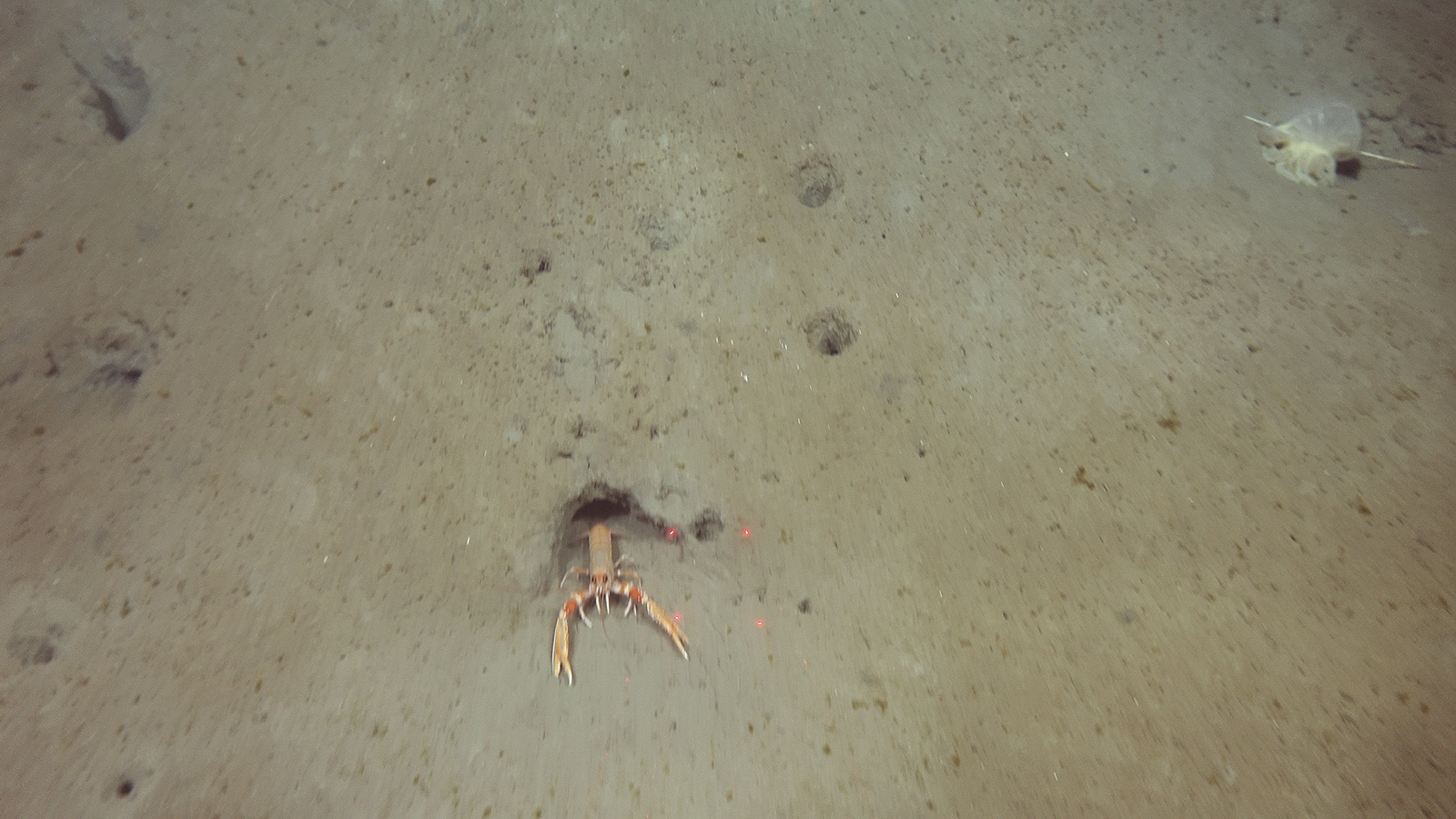
Anemone Ptychodactis patula on the seafloor of Utsira

Anemone Ptychodactis patula on the seafloor of Utsira
Published: 12.04.2023
For many years in Mareano we have seen a yellow anemone on the seabed, one that, with its large foot, looks different than the others, but which we have not been able to put a name to. We have instead called it "yellow anemone", with the hope that one day we would come to know its real identity. Now the truth has been revealed, and it turns out that it is a predator with a taste for seapens...

The first time we lowered our video rig – the Chimera – to the seabed outside of Utsira, we saw it. First from a distance as a slightly large, innocent anemone sitting in the mud. Then, as someone who happened to come across a dead seapen - maybe it's a scavenger? we thought. Someone who eats what it comes across of dead remains on the seabed? But a few minutes later along our video line, we got a hint of its true nature; there, high on top of a Funiculina seapen, it had wrapped its big foot around, and twisted - with its mouth firmly aimed at the luscious seapen polyps...Could this extra piece of the puzzle aid us in finding the true identity of the anemone?

At lunch we met our cruise leader Rebecca Ross (Bex), and eagerly talked about this yellow anemone that we now thought might be a predator, with seapens on the menu. Oh, I just heard of such an anemone! replied Bex. Just before we left for our expedition, our colleague Lene Buhl-Mortensen had stopped by Bex's office and told her about her new article that was in press concerning seapens in the Skagerrak. She showed Bex some figures and happened to highlight an anemone that eats seapens, namely Ptychodactis patula (see below for source of the article). A check of images and literature revealed that the yellow anemone was none other than that same predator, Ptychodactis patula.
This taxonomic group of anemones (Ptychodactis) has only 3 species, all of which are known for hunting corals and seapens. The species found in our videos is the only one that occurs in Norway; the other two are southern species, with one found along the coast of Africa and the other around Chile. Its flexible and unique body form allows it to crawl and roll on the seafloor in search for prey. Scientists that have collected it from the sea have described it as “so soft that it spreads against the boat deck like a cloth” (Grebel’nyi, 2007).

The Easter mystery of the true nature of the yellow anemone has now been solved. Next, we travel on to the North Sea to uncover more truths.
Buhl-Mortensen L, Thangstad TH, Guldborg S, Wehde H (2023) Sea pens and bamboo corals in Skagerrak and the Norwegian trench, Marine Biology Research (in press).
Grebel’nyi, SG (2007) New Records of the Sea Anemone Ptychodactis patula Appellöf, 1893 (Anthozoa: Actiniaria) in the Northern and Far Eastern Seas of Russia, Russian Journal of Marine Biology 33:1